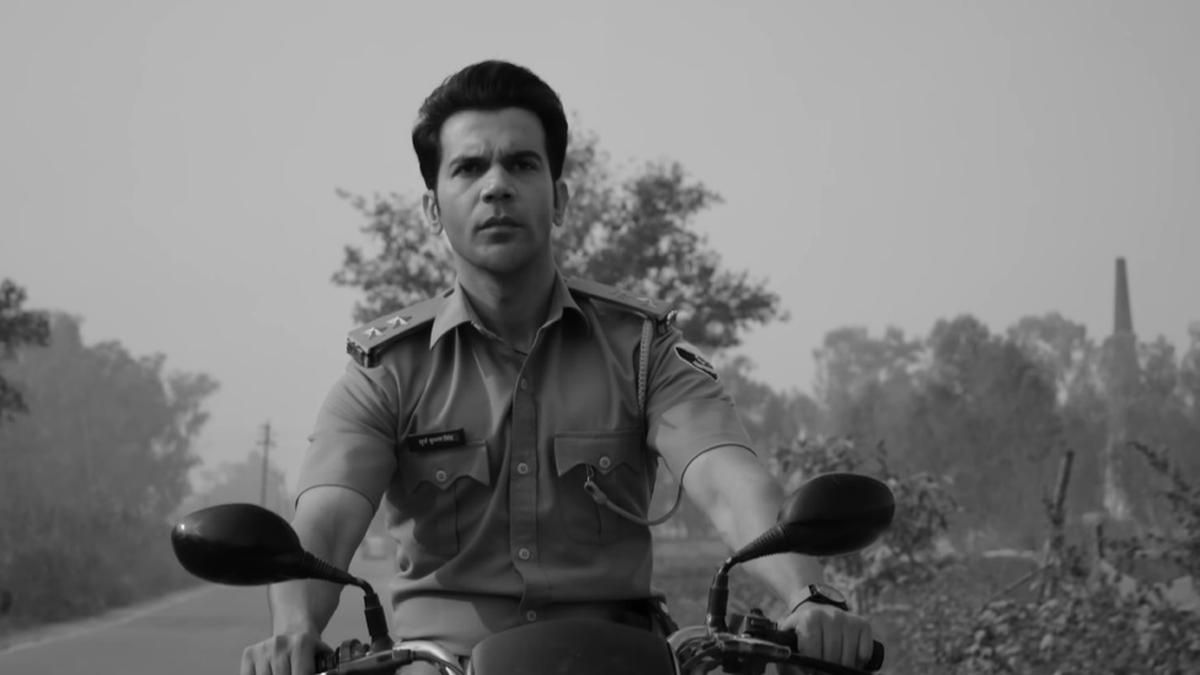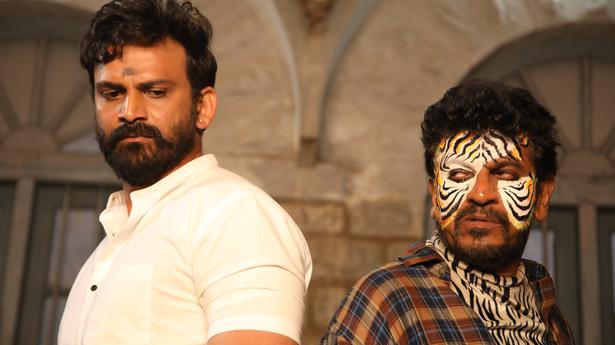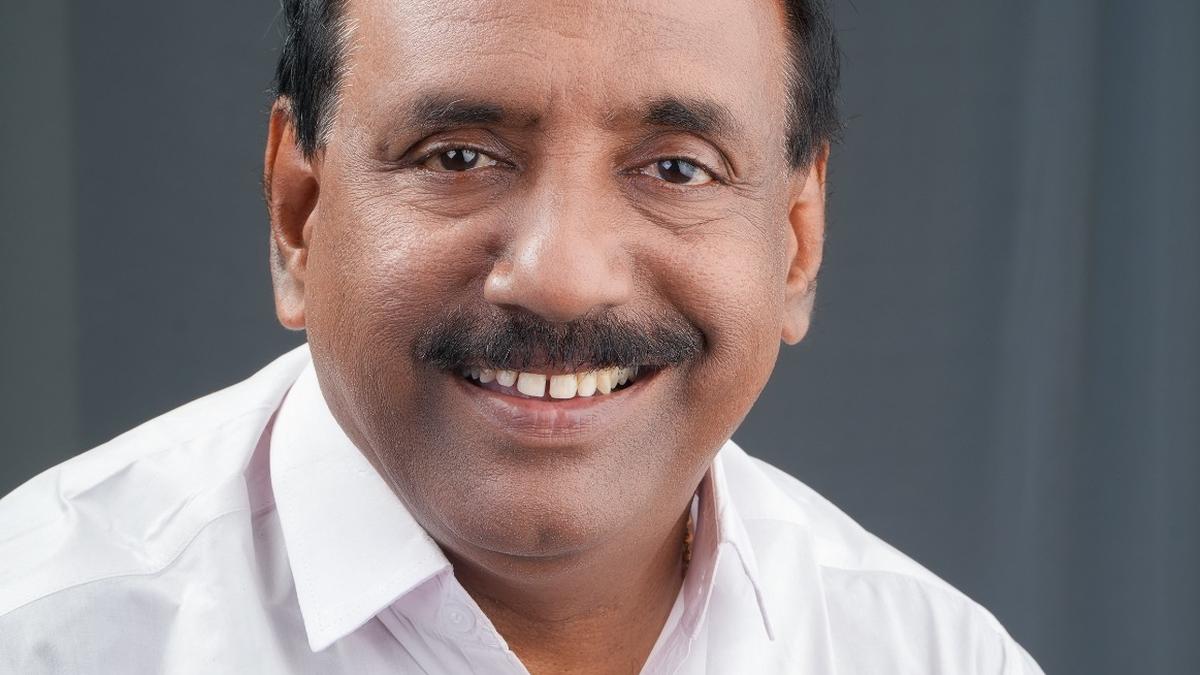The documentary about a TikToker that is premiering at the New York Indian Film Festival brings the focus back to India’s aspiring influencers and small-town creators
The documentary about a TikToker that is premiering at the New York Indian Film Festival brings the focus back to India’s aspiring influencers and small-town creators
As the lights go off at night in a small Mumbai flat, a ring light comes on in its drawing room. Mayur Natekar, 21, opens the TikTok app on his phone and starts recording. Drab T-shirts, lank hair and claw clips borrowed from his mother transition into sunglasses and tight dress shirts opened to reveal a toned chest, as he pulls funny faces or strikes ‘sexy’ poses. In the background, his younger brother asks why he’s copying others, but Mayur insists his videos are “different”.
This is one of the opening scenes of 15 Seconds: A Lifetime, a documentary that follows Mayur’s eight-month TikTok journey, during which he gained around 70,000 followers, before the app was banned in India. The film, directed by his junior in college, Divya Kharnare, now 22, is premiering at the ongoing New York Indian Film Festival (which ends on May 13).
Divya Kharnare
| Photo Credit: Special arrangement
TikTok, with its fascinating world of exaggerated overtones, dramatic flourishes, and an explosive celebration of clichés, had captured India’s imagination like no other when it launched in India in 2017. At its peak in 2020, the short-form video sharing platform had 200 million users in the country — many of whom were from tier two, three and four cities and towns, and from lower socioeconomic backgrounds.
Also read:The Mahtos — the ones that crossed over from TikTok to Instagram
“If you took a BEST bus or a local train [before the pandemic], you realised what people were watching on their phones were always these videos. From this maulvi in Bhopal who preaches via quirky videos or this guy from the Northeast who eats all kinds of chillies,” recalls writer-producer-director Hardik Mehta ( Pataal Lok, Amdavad Ma Famous), who provided Divya the resources to see the movie through when he was rejected from a Sundance grant. “I’d wanted to make a documentary on this world, but just never got the time, though I’d keep taking notes. So, when Divya shared the rough cut, there was the film, exactly how I wanted to make it.”

Hardik Mehta
| Photo Credit: Special arrangement
Chasing the likes
When Divya set out to demystify TikTok with a brief three-month project, he didn’t envision it to take on the life it did — a coming-of-age story with a ban and a pandemic as its backdrop. “I was 19 when I started the film,” he says. “I only knew of the TikTok phenomenon, but I’ve always questioned how the art I create connects to my privilege. When I started my research, I realised that the average monthly income of the TikTok creators is less than ₹25,000.”
He zeroed in on Mayur, who had joined TikTok in October 2019 and spoke of his ambitions to make it big on the platform. He got access to his family, who seemed straight out of a larger-than-life film: a boisterous mother with a wicked sense of humour (“If rich people use a toilet made of gold, will you too?” she yells at Mayur after he bleached his hair platinum), a younger brother who holds nothing back (“Look at your face, who will watch your videos?”), and an acutely self-aware father.
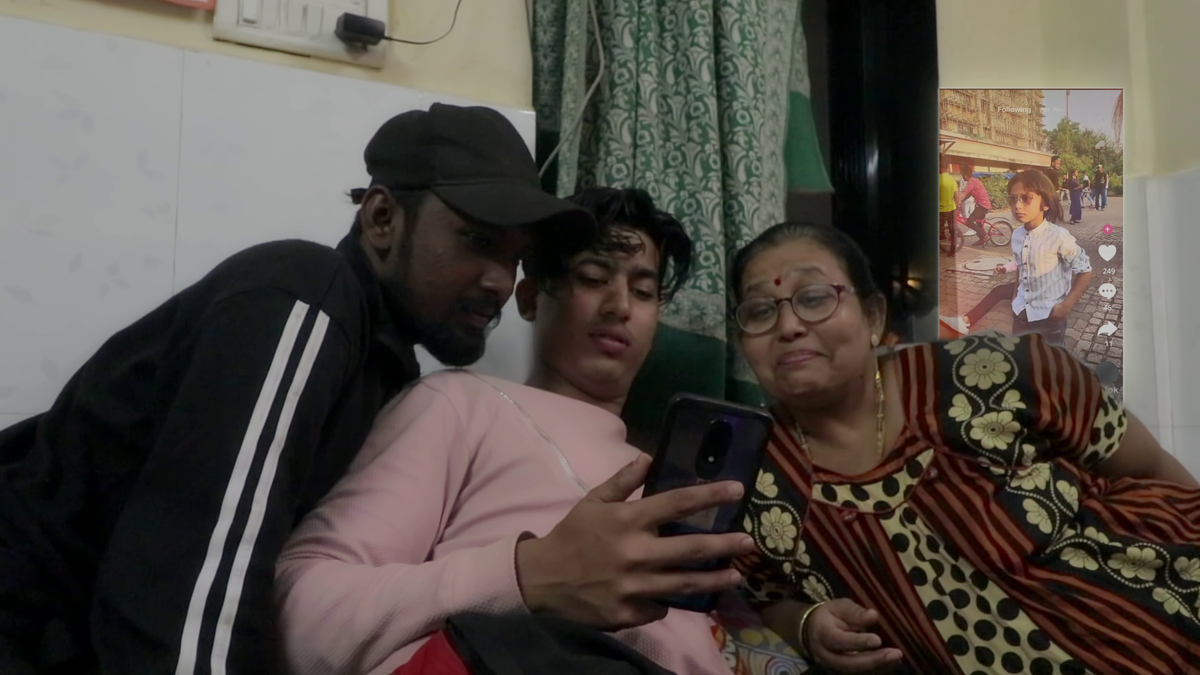
L to R: Mayur’s friend, brother and mother
| Photo Credit: Special arrangement
The documentary — which he shot on a Canon 77D with a basic Shotgun mic and a skeleton three-member crew — follows Mayur as he goes through realisations about fame, money, and whether it’s all worth it. It is also peppered with a range of creators who have fallen away: a rickshaw driver admits that he’d like to be a TikToker, but doesn’t have the patience or grit to do it; a salon owner still uses the comb he wielded for an episode in India’s Got Talent, and waxes eloquent about the hypocrisy of TikTokers (“They arrive in rickshaws but pose in BMWs even though they stay in slums like us”); while Natekar’s multitude of friends keeps pushing him to be “original” in his videos.

“He does slowly grow disenchanted with the whole process,” says Divya. “This is crucial because these TikTokers are highly self-aware; they are not aimlessly wandering around. I wanted to humanise them, and without taking any sides, understand how layered their worlds are. Even the TikTok videos that are woven in the film were carefully selected to show this fascinatingly diverse world.”
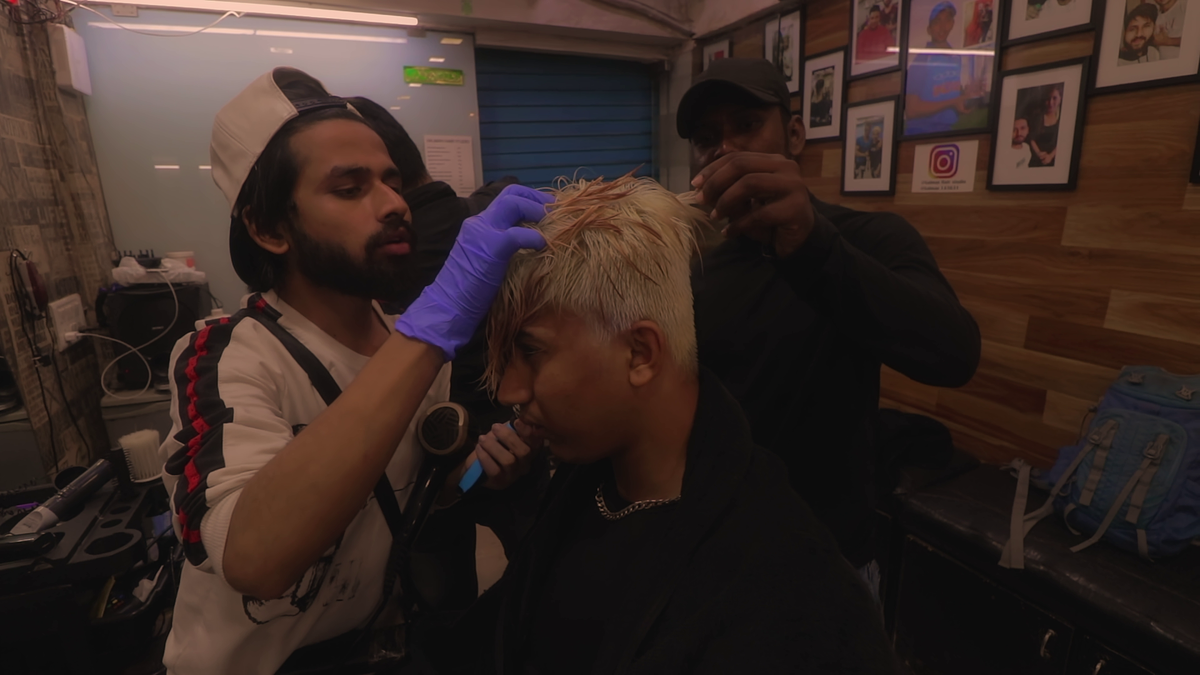
The salon owner
| Photo Credit: Special arrangement
Who’s stepping up?
Two years on, he believes the film (shot on a budget of ₹20-₹25 lakh) still assumes great significance “because the 15-second format is here and has even increased with each passing day”. But while it does shine a light on the pool of creators we have in the country and the potential they have, the question is, where are they now?
Many have moved on, with little or no success, to local alternatives that haven’t been able to reach TikTok’s scale. According to Sachin Mishra, a programme manager in an edtech platform, this can be explained by the fact that TikTok was global in its reach while apps such as Moj, MX Taka Tak and Chingari are not.
Sachin Mishra, programme manager
| Photo Credit: Special arrangement
Unclear forms of compensation — “Chingari is experimenting with cryptocurrency,” says Sachin, “but in a country like India with heavy crypto regulations, how can creators understand and use these incentives?” — and privacy concerns also play a part. “In 2020, there were concerns that apps like Chingari and MX Taka Tak were redirecting their users to third-party websites, thus compromising their cookies that had their personal information [a French security researcher Elliot Alderson had claimed that the website of Globussoft, the company behind Chingari, was compromised. The company stated its app was safe],” says Shivam Mishra, a software front end developer.
Instagram, one of the popular alternatives, is hampered by the kind of content it promotes. As Rahul Advani, a research fellow at the University College London, told the Rest of World, a global non-profit publication, last year, “it is a catalogue of aspiring lifestyle [examples] for middle-class and upper-middle-class Indians” and the clear difference between Reels and TikTok is that the former is for curators, not creators, which makes it a more upmarket space. The Meta-owned app’s 2021 change in algorithm — it announced it would not promote videos that are blurry or have a watermark or logo — is also a handicap for creators from small towns with their low-end smartphones and limited data plans.
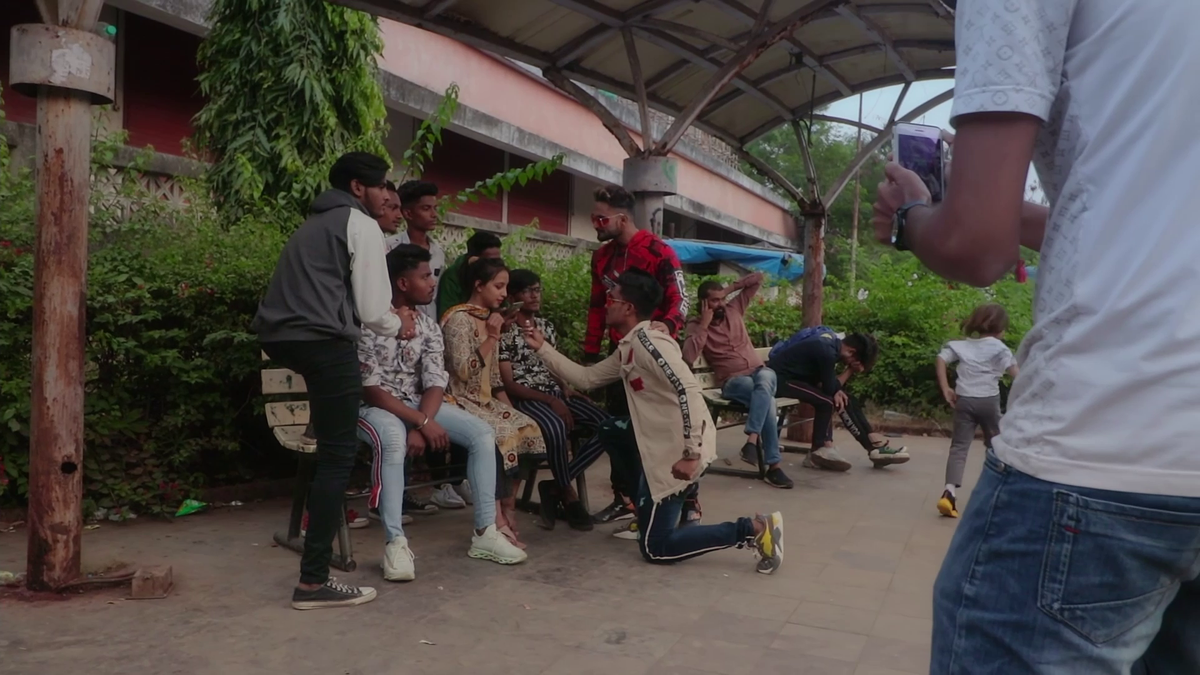
Mayur shooting a TikTok video
| Photo Credit: Special arrangement
Meanwhile, Mayur has moved on from short-form videos to a nine-to-five grind. His dress shirts are now symbolic of a tamed man, and his Instagram page with a measly 14,700 followers, keeps track of his gym days and occasional photoshoots. According to Mumbai-based neuropsychologist Jasdeep Mago, creators like Mayur eventually end up prioritising safety over passion and no one can fault them for making that choice.
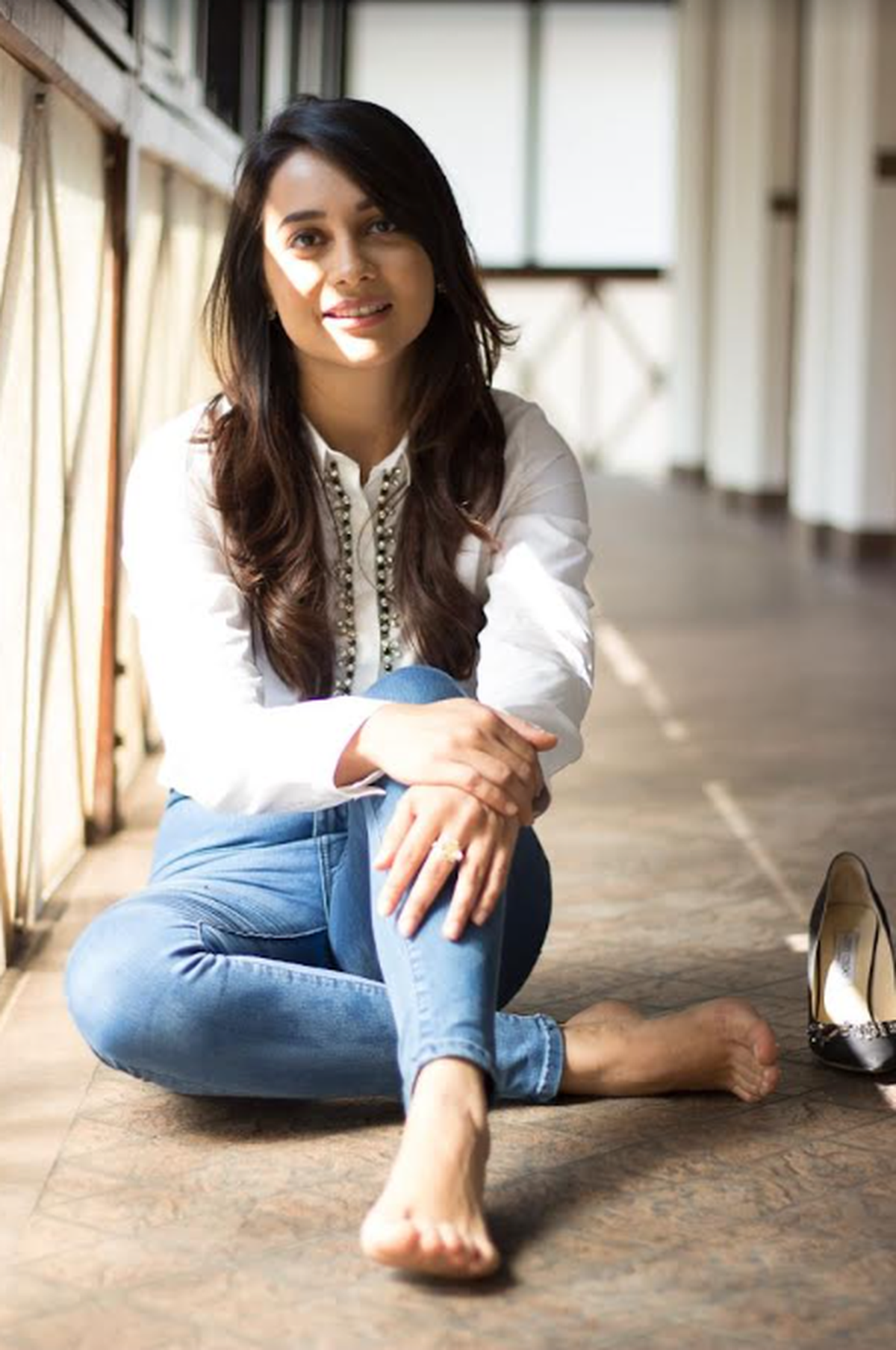
Mumbai-based neuropsychologist Jasdeep Mago
| Photo Credit: Special arrangement
TikTok was the only support system and corner of solace many creators had, she says, and when it was taken away, they were without direction. “Things were bad anyway with the looming unemployment crisis [even before the lockdown]. This was the glimmer of hope for many. Till the very end, they kept hoping that there will be that one viral video that will solve everything,” she adds. Would Mayur come back as a content creator if he had a platform with TikTok’s advantages? Probably.
“There are these millions of anxious creators like Mayur who are lost to us simply because of geopolitical reasons and poor app design [when it comes to local offerings],” says Sachin. “All we need is an app with a global resonance that will assure these creators that it’s okay to dream again. Until then, we can only wait.”

The New York Indian Film Festival is on till May 13.
Arman Khan is a writer and editor based in Mumbai.



